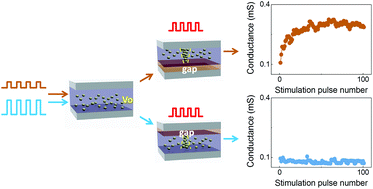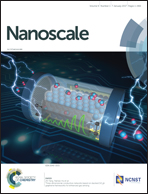Emulation of synaptic metaplasticity in memristors†
Abstract
Recent studies have shown that nanoionic-based memristors can offer rich internal dynamics during ion movement that enables these solid-state devices to emulate various synaptic functions in biological systems naturally. The experimental observations can be explained within the 2nd-order memristor theoretical framework, which states that the device conductance (weight) can be determined by multiple internal state variables that can be modulated at different time scales and lead to different activity-dependent synaptic behaviors. Here, we show experimentally that not only the synaptic weight, but also synaptic plasticity (i.e. polarity and the rate of weight change) depends on the history of the input activities. This “plasticity of plasticity” resembles metaplasticity effects observed in biological systems, which have been found to facilitate neuron competition and stability. Specifically, we show that the memristor device may exhibit the same apparent weight (conductance) after experiencing different history of activities, but when subjected to additional, identical stimulation conditions, the device will however exhibit very different responses including the polarity and rate of weight (conductance) change. These findings serve to further our knowledge of fundamental physical mechanisms in memristors, and help advance adaptive artificial neuromorphic systems based on these emerging devices.



 Please wait while we load your content...
Please wait while we load your content...